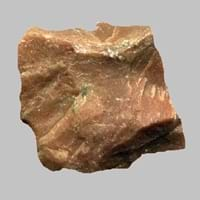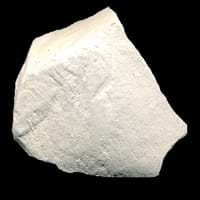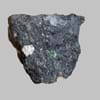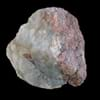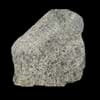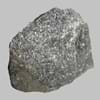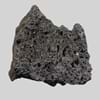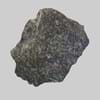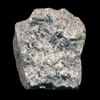Definition
Rhyolite is a fine-grained igneous rock which is rich in silica
Chalk is a soft, white, powdery limestone consisting mainly of fossil shells of foraminifers
Origin
North America
Unknown
Discoverer
Ferdinand von Richthofen
Unknown
Etymology
From German Rhyolit, from Greek rhuax lava stream + lithos stone
From old English cealc chalk, lime, plaster; pebble, from Greek khalix small pebble, in English transferred to the opaque, white, soft limestone
Class
Igneous Rocks
Sedimentary Rocks
Sub-Class
Durable Rock, Hard Rock
Durable Rock, Soft Rock
Group
Volcanic
Not Applicable
Other Categories
Coarse Grained Rock, Opaque Rock
Fine Grained Rock, Opaque Rock
Texture
Aphanitic, Glassy, Porphyritic
Clastic or Non-Clastic
Color
Grey, White, Light Black
Grey, White, Yellow
Durability
Durable
Durable
Interior Uses
Decorative Aggregates, Homes, Hotels, Interior Decoration, Kitchens
Decorative Aggregates, Homes, Interior Decoration
Exterior Uses
As Building Stone, As Facing Stone, Paving Stone, Office Buildings
As Building Stone, As Facing Stone, Paving Stone, Garden Decoration
Other Architectural Uses
Not Yet Used
Powder
Construction Industry
Arrowheads, As Dimension Stone, Building houses or walls, Construction Aggregate, Cutting Tool, for Road Aggregate, Knives
As Dimension Stone, Cement Manufacture, Construction Aggregate, for Road Aggregate, Making natural cement, raw material for manufacture of quicklime and slaked lime, Source of calcium
Medical Industry
Not Yet Used
Not Yet Used
Antiquity Uses
Artifacts
Artifacts, Monuments, Sculpture, Small Figurines
Commercial Uses
Gemstone, Laboratory bench tops, Jewelry
Alumina Refineries, Creating Artwork, Drawing on blackboards, Gymnasts, athletes and mountain climbers use for grip, In aquifers, Paper Industry, Production of Lime, Raw material for manufacture of quicklime, slaked lime, Soil Conditioner, Whiting, Whiting material in toothpaste, paint and paper
Types
Pumice Rocks, Obsidian Rocks, Perlite Rocks, Porphyritic Rocks.
Not Available
Features
Acidic in nature, Available in lots of colors
Clasts are smooth to touch, Is one of the oldest rock, Smooth to touch, Very fine grained rock
Archaeological Significance
Monuments
Not Yet Used
Used
Famous Monuments
Not Applicable
Data Not Available
Sculpture
Not Yet Used
Used
Famous Sculptures
Not Applicable
Data Not Available
Pictographs
Not Used
Used
Petroglyphs
Not Used
Used
Figurines
Not Yet Used
Used
Formation
Rhyolite is a felsic extrusive rock and due to its high silica content, rhyolite lava is very viscous and is volcanic equivalent of granite.
Chalk is formed from lime mud, which accumulates on the sea floor which is then transformed into rock by geological processes.
Mineral Content
Biotite, Feldspar, Hornblade, Plagioclase, Pyroxene, Quartz
Calcite, Clay, Clay Minerals, Quartz, Sand
Compound Content
Ca, Fe, Potassium Oxide, Mg, Potassium, Silicon Dioxide, Sodium
Ca, NaCl, CaO
Types of Metamorphism
Burial Metamorphism, Cataclastic Metamorphism, Regional Metamorphism
Not Applicable
Types of Weathering
Biological Weathering, Chemical Weathering, Mechanical Weathering
Biological Weathering, Chemical Weathering
Types of Erosion
Chemical Erosion, Sea Erosion, Water Erosion, Wind Erosion
Chemical Erosion, Coastal Erosion, Water Erosion
Grain Size
Large and Coarse Grained
Very fine-grained
Fracture
Sub-conchoidal
Not Available
Porosity
Highly Porous
Highly Porous
Compressive Strength
Not Available
Cleavage
Not Available
Non-Existent
Specific Gravity
2.65-2.67
2.3-2.4
Transparency
Opaque
Opaque
Density
2.4-2.6 g/cm3
2.49-2.50 g/cm3
Specific Heat Capacity
Not Available
Resistance
Heat Resistant, Wear Resistant
Heat Resistant
Deposits in Eastern Continents
Asia
China, India
Brunei, India, Indonesia, Malaysia, Singapore, Thailand, Vietnam
Africa
Angola, Egypt, Madagascar, Namibia, Nigeria, South Africa
Cameroon, Chad, Ghana, Kenya, Malawi, Sudan, Tanzania, Togo, Zambia, Zimbabwe
Europe
Germany, Iceland, Ireland, Italy, Spain
England, France, Germany, Spain, United Kingdom
Others
Not Yet Found
Not Yet Found
Deposits in Western Continents
North America
Canada, USA
Canada, USA
South America
Argentina, Bolivia, Chile, Colombia, Ecuador, Peru, Venezuela
Colombia
Deposits in Oceania Continent
Australia
New Zealand, Queensland, Western Australia
Adelaide, New Zealand, Queensland, Tonga, Victoria, Yorke Peninsula
All about Rhyolite and Chalk Properties
Know all about Rhyolite and Chalk properties here. All properties of rocks are important as they define the type of rock and its application. Rhyolite belongs to Igneous Rocks while Chalk belongs to Sedimentary Rocks.Texture of Rhyolite is Aphanitic, Glassy, Porphyritic whereas that of Chalk is Clastic or Non-Clastic. Rhyolite appears Banded and Chalk appears Soft. The luster of Rhyolite is earthy while that of Chalk is dull. Rhyolite is available in grey, white, light black colors whereas Chalk is available in grey, white, yellow colors. The commercial uses of Rhyolite are gemstone, laboratory bench tops, jewelry and that of Chalk are alumina refineries, creating artwork, drawing on blackboards, gymnasts, athletes and mountain climbers use for grip, in aquifers, paper industry, production of lime, raw material for manufacture of quicklime, slaked lime, soil conditioner, whiting, whiting material in toothpaste, paint and paper.
